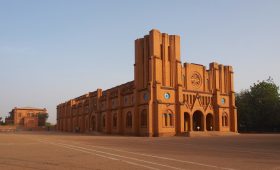Exploring the Mogao Caves
The Mogao Caves, also known as the Thousand Buddha Grottoes, are a remarkable site located near Dunhuang in China’s Gansu province. This UNESCO World Heritage Site is a treasure trove of Buddhist art and architecture, with its origins tracing back over a thousand years. The caves house an extensive collection of murals, sculptures, and manuscripts that offer a window into the cultural and religious history of the region.
What Makes the Mogao Caves Special?
Situated along the historic Silk Route, the Mogao Caves are a testament to the crossroads of trade, religious, cultural, and intellectual influences. The site comprises 492 caves, each adorned with statues and wall paintings that span a millennium of Buddhist art. The diversity of artistic styles is striking, reflecting a blend of Chinese, Indian, and Central Asian influences. This fusion is a result of the caves being expanded and modified by various dynasties and cultures over the centuries.
When to Visit
For the best experience, plan your visit during the spring or autumn. The weather is mild, making it comfortable to explore the site. Summers can be extremely hot, while winters are quite cold, so it’s wise to avoid these extremes. Visiting on weekdays and outside of peak tourist seasons can also help you enjoy a more serene experience.
Getting There
Reaching the Mogao Caves is straightforward. The nearest major airport is in Dunhuang, which is well-connected to other major cities in China. From the airport, you can take a taxi or arrange a private transfer to the caves. If you’re already in China, consider taking a train or bus to Dunhuang, followed by a short journey to the site.
Local Transportation
Once in Dunhuang, you have several options to reach the Mogao Caves. Hiring a taxi or joining a guided tour is convenient and popular. Taxis are readily available and can take you directly to the site. For a more budget-friendly option, local buses run from Dunhuang to the caves, offering scenic views of the desert landscape during the approximately 30-minute journey.
Visiting the Caves
Upon arrival, the visitor center is your first stop. Here, you can purchase tickets and learn about the site’s history. Hiring a knowledgeable guide is highly recommended to gain deeper insights into the artwork and navigate the numerous caves effectively. Each cave tells a unique story through its murals and sculptures, depicting scenes from Buddhist scriptures, legends, and historical events.
Note that photography is not permitted inside the caves to protect the delicate artwork. However, there are designated areas where you can capture the overall beauty of the site.
Key Facts
- The Mogao Caves are located near Dunhuang in the Gansu province of China.
- This UNESCO World Heritage Site is renowned for its Buddhist art and architecture.
- The artwork spans over a thousand years and showcases a blend of Chinese, Indian, and Central Asian traditions.
- Spring and autumn are the best times to visit for mild weather and fewer crowds.
- Access the site via Dunhuang airport, with taxis and buses available for local transport.
- Guides are recommended to fully appreciate the artwork and navigate the caves.
- Photography is restricted inside the caves, with designated areas for photos.




